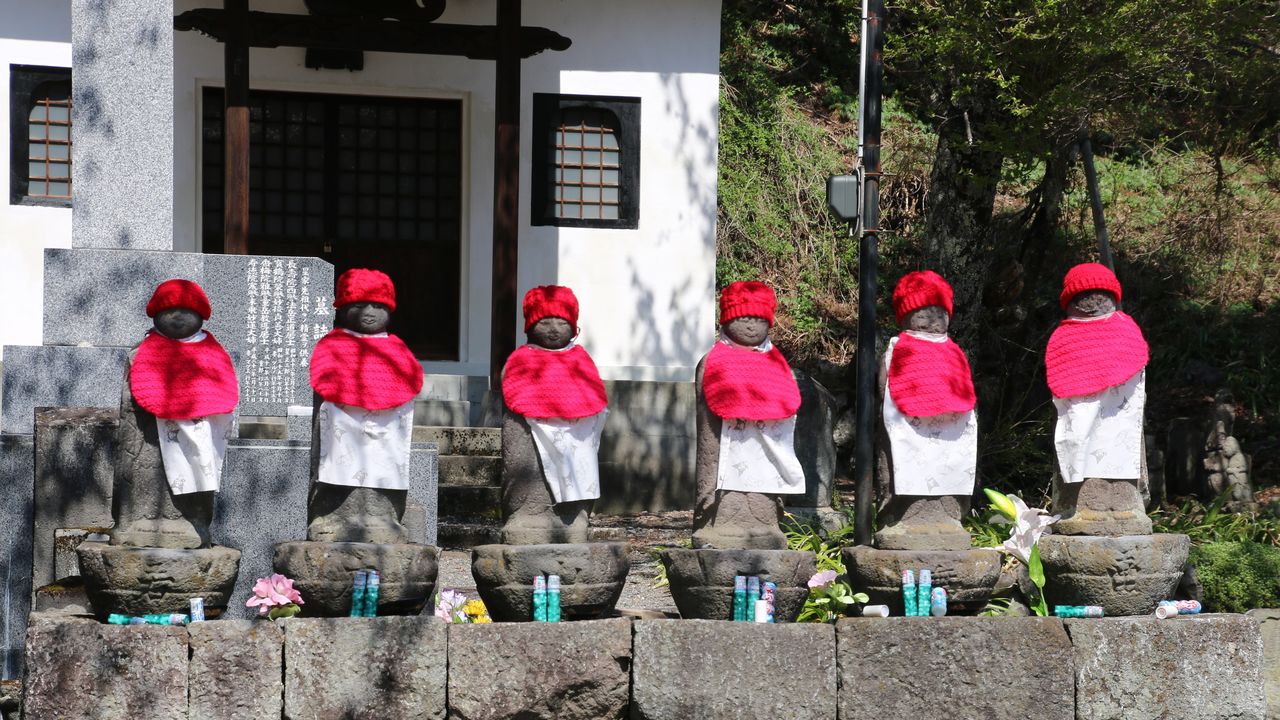
Jizō: Japan’s Protector of Children and Sufferers in Hell
History Culture Guide to Japan- English
- 日本語
- 简体字
- 繁體字
- Français
- Español
- العربية
- Русский
Compassion and Healing
Statues of Jizō, who is associated with compassion and healing, are a familiar sight in Japan. They appear in the form of an often childlike monk, referred to affectionately as O-Jizō-san or O-Jizō-sama. Jizō is a bosatsu, the Japanese term for the bodhisattva in Buddhism—one who is in search of enlightenment, but also seeks to help others attain the state of Buddhahood.
The belief in Jizō was introduced to Japan in around the eighth century, during the Nara period (710–94), and mentions of that early faith appear in a work of the period known as the Jūrinkyō (The 10-Rings Sutra). Jizō is described there as one who is entrusted by Buddha to draw close to the common people. While there is no evidence that Jizō was deeply revered at first, nobles in the early Heian period (794–1185) who had lost their status were known to have prayed to Jizō for help.
This was a time when the regency government was at its height and while the Fujiwara clan prospered in successive posts of regent and chief advisor to the emperor, other low-ranking aristocrats received cold treatment. These fallen nobles despaired of the world (the society centered on the Fujiwaras), and this fostered the gradual formation of rokudō philosophy.
Rokudō literally means “six paths” or in this case, the belief in six realms of existence within which one could find oneself reincarnated. These are the realms of heavenly beings, human beings, asura (demigods), animals, gaki (hungry ghosts), and hells. The realm of hells was the most feared as the most severe with the deepest suffering.
To be in the realm of hells was to be lost without hope. If the nobles died, they would suffer in the hells and even if they were reborn in our world, they would continue to suffer. Somebody was needed who could save people when they returned to the realm of humans and this role was entrusted to Jizō.
The lines of six Jizō statues that may be seen leading into small villages are based on the rokudō philosophy. The statues were believed to protect the dead from suffering and to gently guide them as they went to be reincarnated into one of the six realms. This led to the further belief that the Jizō would also protect the villages from epidemics, evil spirits, and other misfortunes.
A Protector of Children and Communities
Many of the nobility who lost their status became hijiri or itinerant Buddhist monks. As these monks conveyed their beliefs in Jizō to the common people, they developed into various forms.
During the Edo period (1603–1868), one belief that spread was of Jizō as a protector of children. At a time of much higher infant mortality rate than today, it was thought that children who died while still young went into a place of limbo on the sai no kawara, a stony riverbank before the Sanzu River, similar to the River Styx in Greek mythology, over which departed souls crossed. There, the children had to pile up stones into towers to atone for their sin of causing their parents pain by dying before them. However, once a child had made a tower, demons would mercilessly knock it down. The child would then have to start piling the stones again, crying all the while. Jizō was seen as able to save the children from that suffering. After that, it became a custom to hold festivals for Jizō in which children could easily participate.
The long-standing, weatherworn Jizō that can be seen on the roadside are often dressed in aprons and hoods by the local residents, due to their strong association with the image of a child.
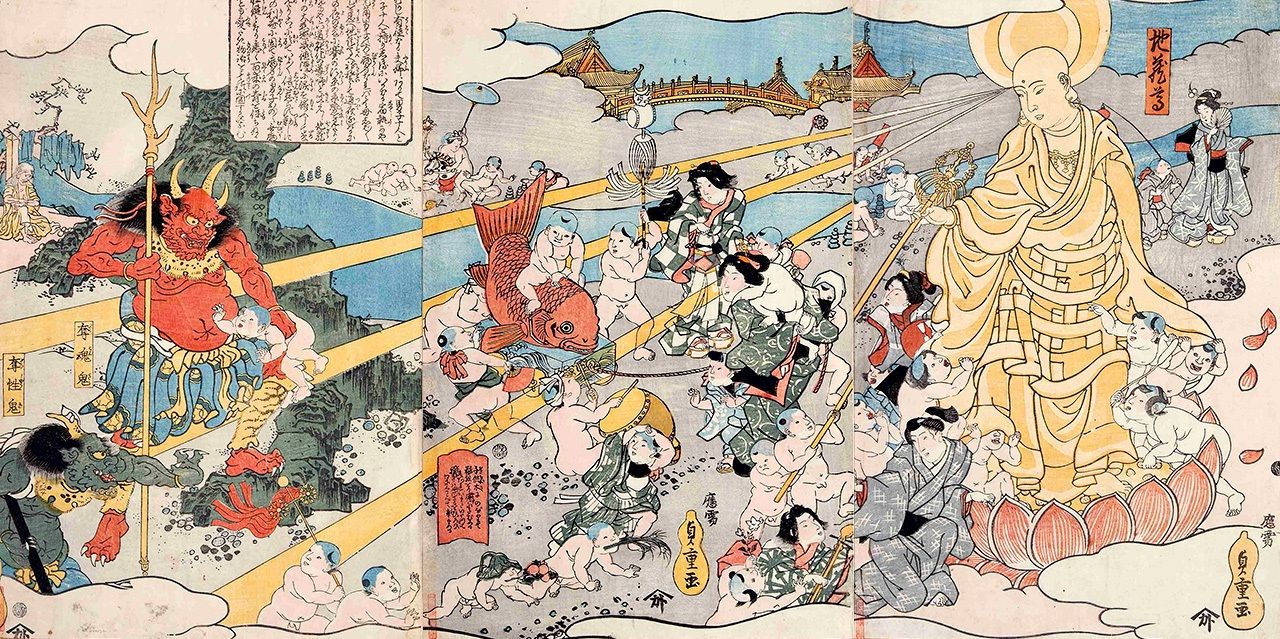
Sai-no-Kawara Jizō-son, painted by the ukiyo-e artist Utagawa Kuniteru (1808-76). On the left, children are being bullied by demons, while on the right Jizō is depicted saving them. (Courtesy Tokyo Metropolitan Library)
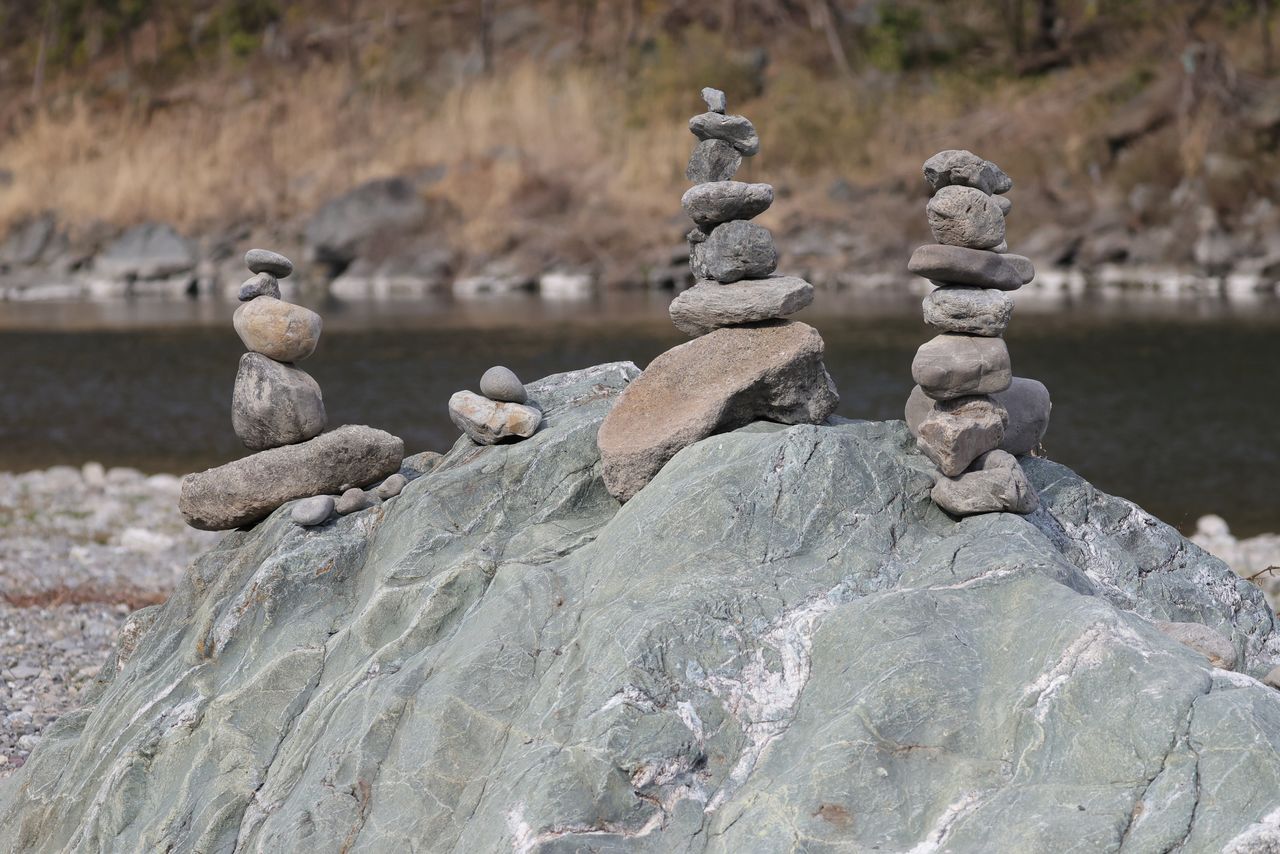
An image of the piles of stones on the sai no kawara riverbank.
There are also other Jizō, such as Migawari Jizō (substitute Jizō), which will take on one’s suffering, and Togenuki Jizō (thorn-pulling Jizō), thought to remove one’s pain. Jōtokuji, a temple in Bunkyō, Tokyo, has a legend of a monk who, about to go blind in his right eye, prayed to Jizō and while it got better, the eye of the statue at that temple became swollen.
Over in Sugamo, Toshima, the temple of Kōganji Temple is known for its Togenuki Jizō. The tale goes that the maid of a samurai family accidentally swallowed a needle and was in agony. She was given a piece of paper with the image of Jizō on it, which she also swallowed. On throwing up both the paper and the needle, it was found that the needle had pierced through Jizō’s image. This led to the belief that this Jizō can remove the pain caused by needles and thorns.
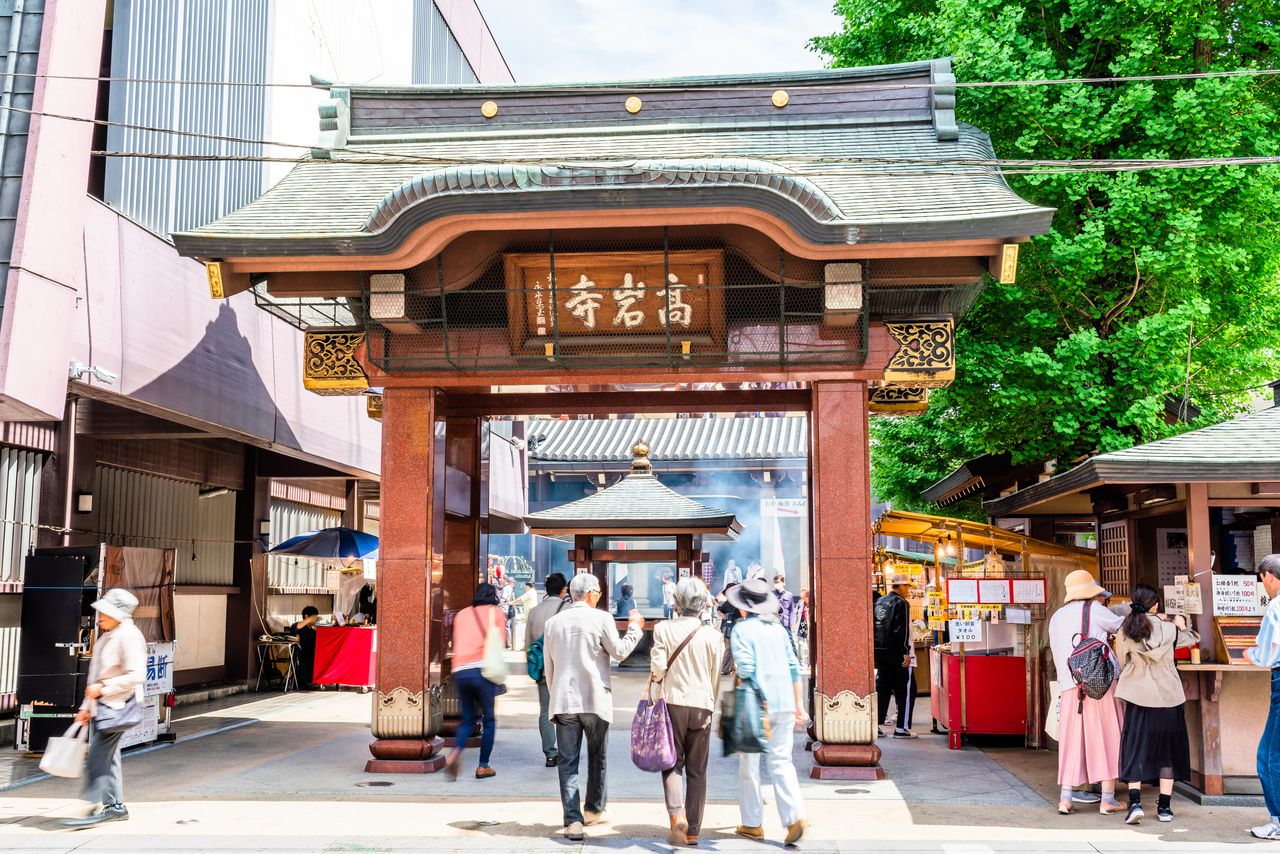
Togenuki Jizōson Kōganji Temple, for which Jizō is the principal deity. The Jizō here is well known as a “thorn-puller”; however, it is a “secret Buddha” and not on public display.
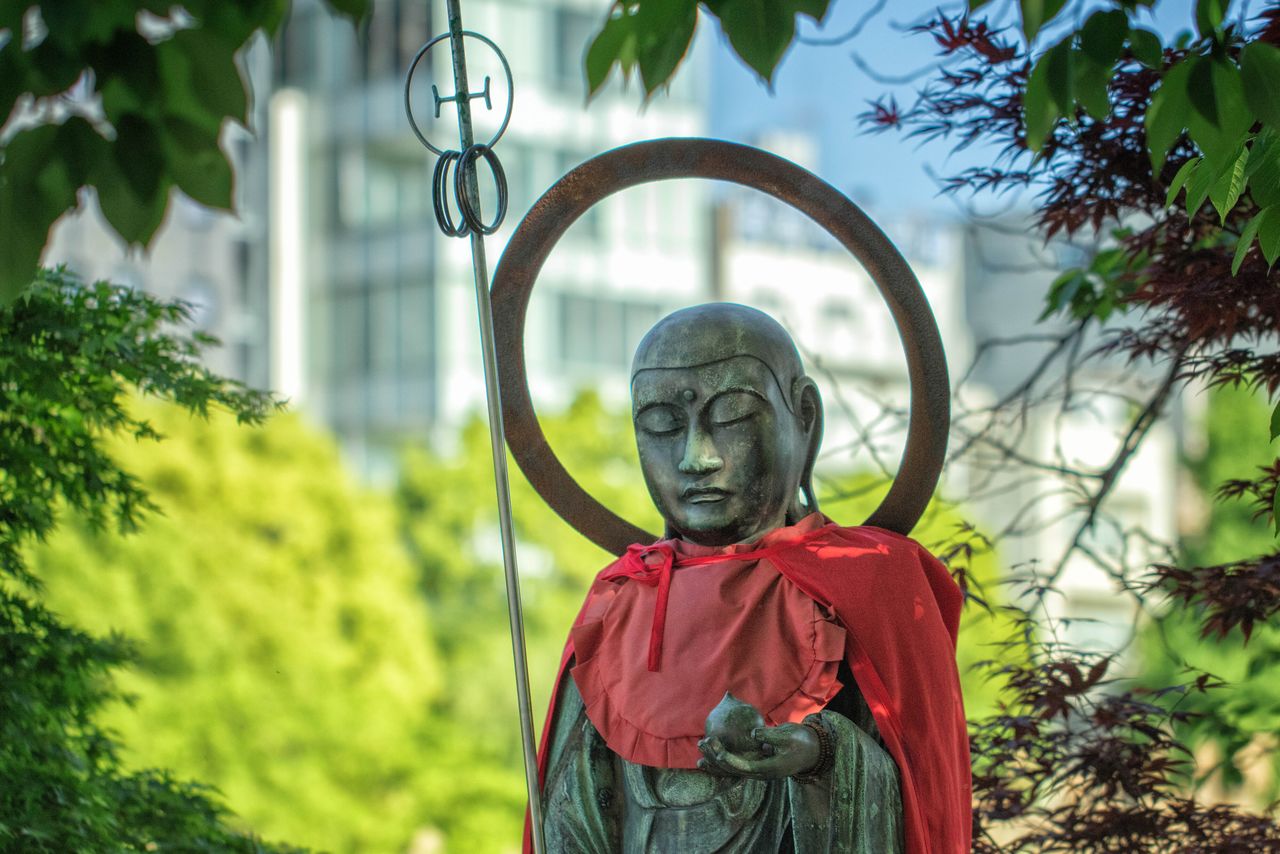
A Jizō statue standing by Shinobazu Pond in Ueno, Tokyo. (© Pixta)
Jizō is usually represented as a shaven-headed monk, holding a shakujō (khakkhara staff topped with metal rings) in his right hand and a hōju (jewel symbolizing the teachings of Buddha) in his left. This simple appearance is to show that he is always close to the people. It is that familiarity paired with the affectionate given name of O-Jizō-sama that makes this Buddha so loved in Japan.
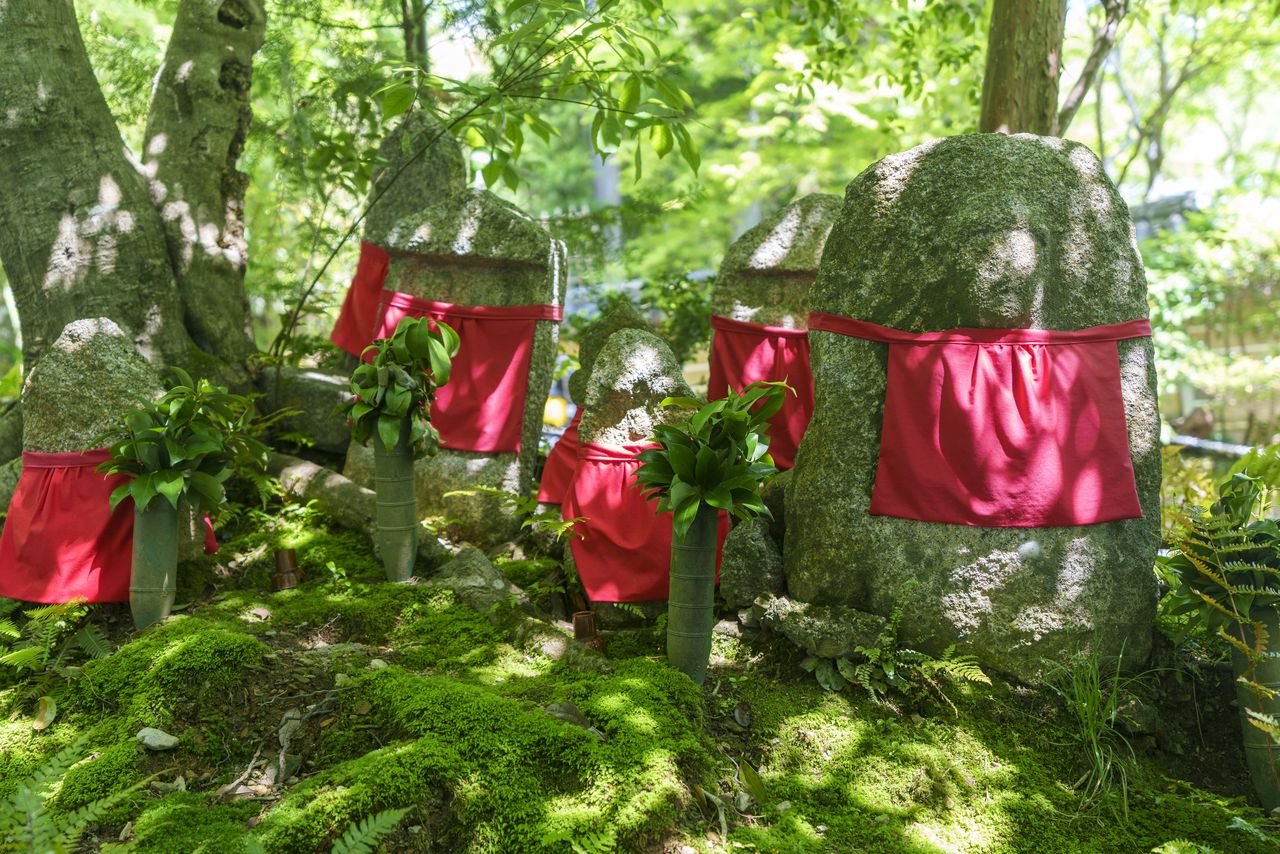
Jizō statues near the temple of Giōji in Okusaga, Kyoto. (© Pixta)
(Originally published in Japanese. Banner photo © Pixta.)